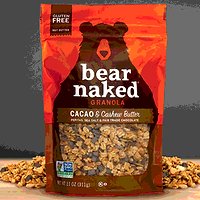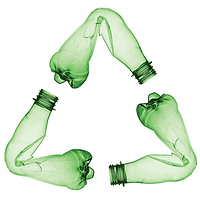Marrying Food Safety and Sustainability

Consumers, manufacturers, and brand owners require a lot from packaging. We need packages to promote and protect products, provide necessary information on ingredients, instructions, and safety, and enhance supply chain efficiency to ensure products reach consumers while maintaining the highest safety and quality standards.
Over the last decade, as sustainability has become a priority, we have asked even more of our packaging materials. Companies are spending more on packaging made of sustainable materials, including recycled corrugated cardboard, high-density polyethylene, and recycled polyethylene film.[1]
When considering sustainability and thinner materials, food companies must look for solutions that allow the package to do what it needs to do: protect the product. Part of the sustainability of food packaging is the use of lightweight materials. The other part is keeping food fresh and protected throughout the supply chain.
Safety is nonnegotiable for every food manufacturer and retailer. Packaging innovations like oxygen scavengers and temperature indicators offer solutions to extend shelf life of food products. These technologies provide an ideal solution for food manufacturers prioritizing safety and working to reduce their ecological footprint.
Innovations in Sustainability
Recent years have seen great advances in technology and nanomaterials for tracking products throughout the supply chain, verification of the authenticity of products, and brand protection. Supply chain traceability in particular has seen significant growth. Some companies offer software that allows full farm-to-fork traceability when combined with packaging serialization. As consumers, we trust that our food supply moves through the supply chain safely. Supply chain traceability technology makes it easier for food companies to ensure their products remain safe and to react quickly to product recalls.
Perishable food products can benefit from the use of temperature indicators to ensure customers are receiving products at their optimal quality. These indicators track a food’s temperature history and change color, showing how long food is still edible. For example, there are temperature indicators that change color faster at higher temperatures. There are also mobile apps that consumers can use to determine the remaining shelf life of their product. This helps ensure consumer safety and also prevents disposal of food that is still edible.
Oxygen absorbers and scavengers are another solution for companies that want to boost sustainability. A variety of companies produce oxygen-absorbing technologies that protect food products from spoilage, mold, color and flavor change, and loss of nutritional value. Oxygen absorbers have applications across food categories—some work well with dry packaged foods, while others are better suited for retort packaging applications. By extending shelf life and preserving the fresh look and taste of food, oxygen absorbers do their part to decrease food waste.
Making Sense of Expiration Dates
Confusion over “use by,” “sell by,” and “best by” dates is a major contributor to food waste. With more than 10 different date labels on packages, consumers often find it difficult to discern when and for how long a food product is OK for consumption, and they end up discarding perfectly safe products.
In September 2017, the Consumer Goods Forum, a network of 400 of the world’s largest food and consumer goods companies, announced an initiative to fight food waste. By asking retailers and food producers to simplify food date labels, the Consumer Goods Forum aims to harmonize expiration dates around the globe.
The voluntary initiative calls on food manufacturers to use just two standard phrases for expiration dates—“BEST if Used By” and “Use By.” “BEST if Used By” will convey the quality of the food product, meaning that the food might not taste or perform its best after the date but is still safe to eat. In contrast, “Use By” will apply to highly perishable products, which should be eaten by the date listed on the package and discarded after that date.[2]
Be Safe, Not Sorry
When it comes to food safety, there is no room for negotiation. Whether by keeping food fresher for longer or informing consumers on when food is safe to eat, modernization in packaging technology and initiatives from industry organizations offer solutions that both protect food and move the industry toward sustainability.
Tom Egan is the vice president, industry services, at The Association for Packaging and Processing Technologies.
References
1. pmmiprod3ebiz.personifycloud.com/PersonifyEbusiness/Default.aspx?TabID=251&productId=21443165.
2. www.npr.org/sections/thesalt/2017/09/20/552116399/global-plan-to-streamline-use-by-food-labels-aims-to-cut-food-waste.
Looking for a reprint of this article?
From high-res PDFs to custom plaques, order your copy today!





